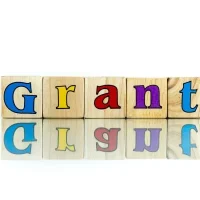In the world of non-profit organizations, the introduction of a proposal or presentation can set the tone for the entire engagement. A compelling introduction not only captures attention but also establishes a connection with potential clients or partners. It is essential to begin with a narrative that resonates with the audience, perhaps by sharing a poignant story or a striking statistic that highlights the urgency of the issue at hand.
For instance, if your NGO focuses on education in underprivileged areas, you might start with a story about a child whose life was transformed through access to quality education. This personal touch can evoke empathy and draw the audience into your mission. Moreover, a well-crafted introduction should succinctly outline the purpose of your proposal.
Clearly stating what you aim to achieve and how it aligns with the goals of your audience can create a sense of shared purpose. This is not merely about presenting your organization; it’s about framing your work within the context of the client’s needs and aspirations. By doing so, you lay the groundwork for a collaborative relationship, making it clear that you are not just seeking funding or support but are genuinely invested in achieving mutual goals.
Highlighting Your Unique Selling Points
Every NGO has its unique strengths and attributes that set it apart from others in the field. Identifying and articulating these unique selling points (USPs) is crucial for capturing the interest of potential partners or donors. These could range from innovative program designs, successful past initiatives, or even a dedicated team with specialized skills.
For example, if your organization has developed a groundbreaking approach to community health that has shown measurable results, this should be front and center in your communications. To effectively highlight your USPs, consider using visuals or infographics that can convey complex information in an easily digestible format. This not only makes your proposal more engaging but also helps to reinforce your key messages.
Additionally, weaving in stories of impact—such as testimonials from beneficiaries or data showcasing your success—can further illustrate why your organization stands out. Remember, potential partners are looking for assurance that their investment will yield significant returns; showcasing your unique attributes can provide that confidence.
Demonstrating Understanding of the Client’s Needs
A successful proposal goes beyond simply presenting your organization; it requires a deep understanding of the client’s needs and challenges. This involves thorough research and active listening to ensure that you are addressing their specific concerns and objectives. Begin by outlining the key issues faced by the client and how these align with your organization’s mission.
For instance, if you are proposing a partnership with a local government to improve sanitation in underserved communities, demonstrate an understanding of their current challenges and how your expertise can help address them. Engaging with stakeholders through interviews or surveys can provide valuable insights into their needs. This not only helps you tailor your proposal but also shows that you value their input and are committed to working collaboratively.
By articulating how your organization can meet their needs, you position yourself as a partner rather than just a service provider, fostering trust and encouraging a more fruitful collaboration.
Providing Clear and Realistic Deliverables
When crafting proposals, clarity is paramount. Potential partners need to understand exactly what they can expect from your organization in terms of deliverables. This means outlining specific outcomes, timelines, and metrics for success in a straightforward manner.
For example, if you are proposing a project aimed at improving literacy rates among children, detail the number of workshops you plan to conduct, the expected increase in literacy levels, and how you will measure this progress. Realistic deliverables also involve setting achievable goals that take into account potential challenges and limitations. It’s important to strike a balance between ambition and feasibility; overpromising can lead to disappointment and damage your credibility.
By providing a clear roadmap of what you intend to accomplish, along with contingency plans for potential obstacles, you instill confidence in your ability to deliver results.
Showcasing Your Expertise and Experience
Demonstrating expertise and experience is crucial in establishing credibility with potential partners or donors. Highlighting past successes can serve as powerful evidence of your organization’s capability to execute projects effectively. This could include sharing statistics from previous initiatives, such as the number of beneficiaries served or improvements observed as a result of your programs.
Additionally, consider including profiles of key team members who bring relevant skills and experience to the table. Incorporating visual elements such as charts or graphs can enhance this section by providing a clear representation of your achievements. Furthermore, sharing lessons learned from past projects can illustrate your organization’s commitment to continuous improvement and adaptability.
By showcasing both successes and challenges faced along the way, you present a well-rounded picture of your organization’s journey and resilience.
Including Testimonials and Case Studies
Testimonials from beneficiaries, partners, or stakeholders can significantly enhance the credibility of your proposal. These endorsements serve as social proof of your organization’s impact and effectiveness. When including testimonials, aim for authenticity; personal stories that highlight specific outcomes can resonate more deeply than generic praise.
For instance, if a community member shares how your program has positively affected their life, it adds a human element that statistics alone cannot convey. Case studies are another powerful tool for demonstrating impact. By providing detailed accounts of specific projects—outlining the challenges faced, strategies employed, and results achieved—you offer potential partners a glimpse into what working with your organization looks like in practice.
This not only showcases your expertise but also allows clients to envision how similar strategies could be applied to their own needs.
Presenting a Clear and Professional Pricing Structure
Transparency in pricing is essential for building trust with potential partners or donors. A clear pricing structure not only outlines costs but also justifies them by linking them to specific deliverables and outcomes. Consider breaking down costs into categories such as personnel, materials, and overheads to provide a comprehensive view of how funds will be allocated.
This level of detail helps clients understand where their investment is going and why it is necessary. Additionally, offering different pricing tiers or options can cater to varying budgets while still allowing for flexibility in project scope. For instance, you might present a basic package that covers essential services alongside premium options that include additional features or support.
This approach not only demonstrates professionalism but also empowers clients to make informed decisions based on their financial capabilities.
Closing with a Strong Call to Action
The conclusion of your proposal is an opportunity to reinforce your message and encourage action from potential partners or donors. A strong call to action should be clear and compelling, urging them to take the next step—whether that’s scheduling a meeting, signing an agreement, or making a donation. Use persuasive language that emphasizes the urgency of their involvement and the positive impact they can have by partnering with your organization.
Moreover, reiterate the shared goals and values that connect both parties. By reminding them of the collective mission at hand, you create a sense of camaraderie that can motivate them to act decisively. Ending on an optimistic note about the potential for collaboration can leave a lasting impression, making it more likely that they will engage with your organization moving forward.
In conclusion, crafting effective proposals requires careful consideration of various elements—from compelling introductions to clear calls to action. By focusing on unique selling points, demonstrating an understanding of client needs, providing realistic deliverables, showcasing expertise, including testimonials, presenting transparent pricing structures, and closing with strong calls to action, NGO professionals can significantly enhance their chances of securing partnerships and funding opportunities. Each component plays a vital role in building trust and fostering collaboration in the non-profit sector, ultimately driving meaningful change in communities around the world.








































